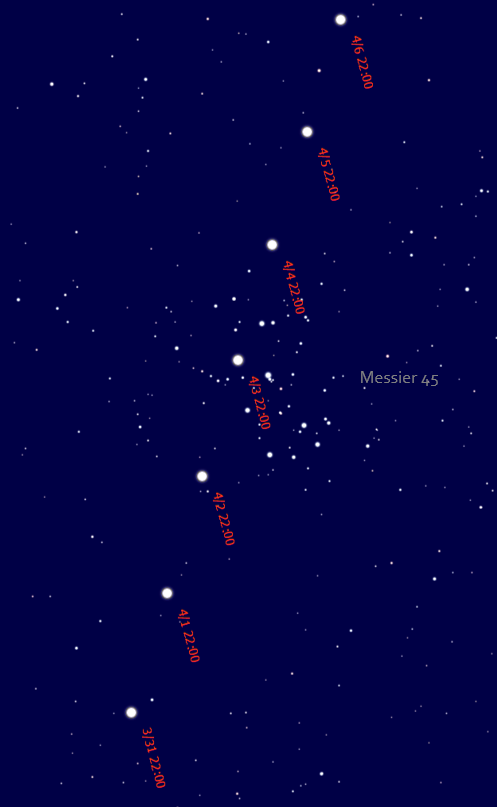This article is submitted by Blake Nancarrow
Getting cabin fever? Well, turn off the TV and get outside and do some astronomy! You don't need special equipment to enjoy the night sky and I have a few suggestions for April 2020 where you just need eyes. If you have binoculars, dust them off. Haul the telescope to the backyard.
For evening observers, Venus is dominating the sky. In the west, the second planet in the solar system is near its maximum angle (elongation) from the Sun which places it very high in the evening sky.
And through a combination of its size and illumination, it reaches its maximum brilliance late in the month. You can't miss it.
For the early-birds, on April 14 through 16, the Moon will team up with morning planets making for a fantastic, picturesque scene. Even if you're not an early-morning person, and maybe you don't have to get up early to drive to work, I encourage you to set an alarm. It'll be worth it.
For a fun photographic project, set your camera up in the same position with the same settings, and take a photo every day. Left to right, the planets are orange Mars, beige Saturn, and sparkling Jupiter.
The Lyrid meteor shower occurs in April every year, from 16 to 30, peaking on 21 and 22. Debris in outer space from the old comet C/1861 G1 (Thatcher), as it hits the Earth's atmosphere, produces medium strength, medium velocity streaks in the night sky.
The Lyrids are reliable with good rates, up to 18 per hour. Fireballs have been reported in the past.
The best part is that this year there will be no light from Moon to interfere! Turn off all the lights, ask your neighbours to do that same, get dark adapted and try from the backyard. Bundle up and enjoy the sky for 30 or 60 minutes or more.
This shower will appear to emanate from the constellation of Lyra so if you look directly at it, or photograph that part of the sky, meteors will seem to radiate outward from there.
But when viewing meteors, it is often better to not look directly at the radiant zone. Take in the whole sky. Then when you see a meteor zip across your field, try tracing it backwards.
With your telescope, aim toward the Leo high in the south. Some constellation stick figures leave a lot to the imagination but I think it looks like a lion. It's easy to find by looking for the backward question mark, often referred to as the Sickle.
The brightest star is Regulus. It is filled with wonderful galaxies and a lot of fun double stars.
Aim to the northern sky for a glimpse of a comet. Look left of Polaris. There are actually three slowly brightening comets in that part of the sky. Maybe one will increase to unaided eye level in the summer.
Let's do some citizen science and gauge light pollution! Visit the Globe at Night https://www.globeatnight.org/ for information and charts and videos and instructions on how to assess your conditions. It can be done quickly and easily with your computer or mobile device. The April campaign runs from 14 to 23.
This month we celebrate Galileo's first use of a telescope for viewing night-time celestial objects in 1611. Happy Telescope Day!
So, keep looking up. The stars aren't going anywhere.
Blake Nancarrow is an avid amateur astronomer. If not observing from his backyard in Bradford, he can be found under the stars at a club observatory on the Blue Mountains or at the David Dunlap Observatory in Richmond Hill. He is a contributing editor for the Royal Astronomical Society of Canada Journal.



